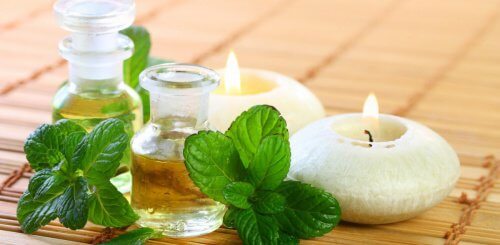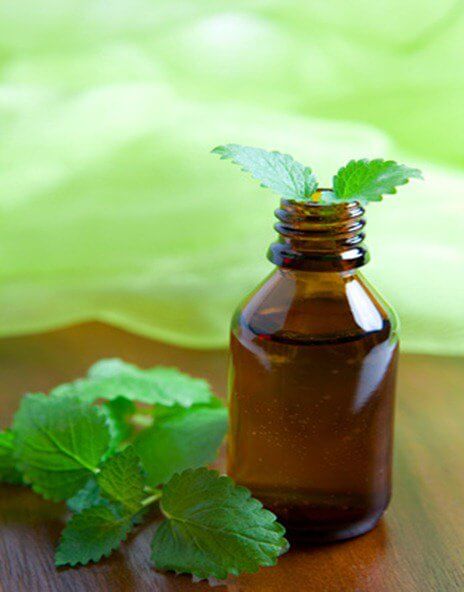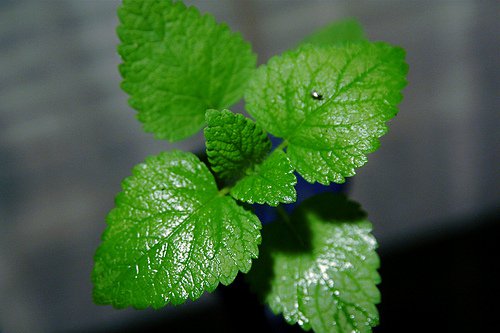How to Make Mint Oil for Your Health


Written and verified by psychologist Valeria Sabater
Mint oil. Are you familiar with all the benefits that this simple remedy provides? It’s truly wonderful because of the numerous applications it has both in terms of beauty and keeping your body healthy. Headaches, swelling… it’s an ancient natural formula that is incredibly healthy, and is definitely worth having around the house.
We’ll show you the easiest way to make this natural remedy at home. You’re going to love how useful it is!
What can I use mint oil for?

1. Cosmetic applications of mint oil
- Mint oil is perfect for regulating acne breakouts and oily skin. You can wet a bit of cotton with this oil to improve your skin’s appearance, especially if you have acne scars.
- It is a great toner. It’s perfect for massaging areas on your body where you have cellulite.
- It’s great for massaging your legs when they feel tired, or to treat spider veins.
- It regulates water retention.
- It can be a good way to get rid of dandruff. Massage a bit of this oil into your damp hair, let it set, and then rinse it out with room temperature water and wash your hair as you always do.
- Mint oil is also great as a deodorant.
- It’s a great lice repellent for kids. Very effective!
Discover more: Coconut Oil for Improving Oral Health
2. Health applications of mint oil
According to Dr Duke: “Peppermint possesses a broad range of biological activities including: digestive, choleretic, carminative, antiseptic, antibacterial, antiviral, antispasmodic, antioxidant, anti-inflammatory, myorelaxant, expectorant, analgesic, tonic, and vasodilatator.” (NCBI)
In addition:
- Mint oil can be used to get rid of headaches. Just apply a bit of this oil to a cold compress to reduce tension headaches.
- You can also use it if you suffer from migraines.
- It reduces swelling.
- Mint oil can be a great pain reliever if you have gotten injured.
- You can use it to treat mild burns.
- It lower fevers and stimulates sweating.
- One of mint oil’s main properties is that it is perfect for calming muscle pain, including rheumatism.
- Do your feet tend to hurt at the end of the day? Do they feel swollen and tired? There’s nothing better to treat that than a bath with hot water and 10 drops of mint oil.
- Mint oil is a basic remedy for any problem related to the respiratory system (bronchitis, hoarseness, the flu, colds…). You can inhale vapors with mint oil or massage it into your chest.
- It’s good for treating insect bites.
- It alleviates premenstrual pain. You can massage this oil onto your stomach or apply a wet cloth with a bit of mint oil.
- It is a refreshing treatment for sunburns.
- Another one of its treatments it that it stimulates the nervous system and combats mental fatigue. It’s perfect!
- It increases energy levels if, for example, you leave a few drops in your bedroom as an air freshener.
How can I make homemade mint oil?

What do I need?
- 350 g of fresh mint (Peppermint).
- 200 ml of base oil. You can choose either almond oil or olive oil.
- A dark glass jar that can hold 250 ml.
How do I make mint oil?
1- The first thing you have to do is get your hands on some peppermint (pay attention to this part, because we’re not talking about regular green mint). You can use homegrown peppermint, or buy it at the supermarket. Once you have a good supply of this mint, you should wash it thoroughly with cold water, leaf by leaf, to get rid of any impurities. Remember that you’re going to apply it directly to your skin, so it needs to be nice and clean.
2- Second step? You have to crush the mint leaves. Use a wooden mallet or spoon. Put plenty of force into this step, because the goal here is to break the leaves up and get them to let out their juices. It’s going to start to smell great.
3- Now, it’s time for the stove top. Grab a pot and fill it with the 200 ml of oil that we mentioned earlier. Place it over a low flame. Then, add the crushed mint, stir, and let the mixture start to distill over low heat. Don’t forget to cover the pot in which you are distilling the peppermint so that its properties will become nice and concentrated and you won’t lose its natural essence. Let this process continue for half an hour, always over very low heat.
Discover more: Ginger and Olive Oil Syrup to Relieve Pain
4- After half an hour has gone by, turn off the stove and let the mixture rest. Next, it’s time for your dark glass jar. Use a fine strainer to pour the mint oil into the container without any of the leaves getting in.
5- You should leave it in a cool place where it won’t be exposed to the sun.
Next step?
6-Patience. You’ll have to wait about 10 days for your homemade mint oil to finish developing all of its properties. Also, you should remember to turn the jar over every 12 hours to make sure that everything mixes together well.
7- We’d like to note that many people, instead of making mint oil, make mint alcohol. Mint alcohol is a bit more effective at treating muscular and rheumatic problem, as well as cuts and scrapes. If you’re interested in preparing this mint mixture, all you have to do is mix the peppermint leaves with a bottle of alcohol with 95% alcohol by volume. Pour this mixture into a watertight container and let it rest in a cool, dark place for 15 or 20 days.
Once this amount of time has gone by, strain the contents and keep the remaining alcohol. It is truly medicinal and will help you alleviate muscular and rheumatic pain. Very useful!
We hope you liked our article, for more information on mint click below!
All cited sources were thoroughly reviewed by our team to ensure their quality, reliability, currency, and validity. The bibliography of this article was considered reliable and of academic or scientific accuracy.
- Duke JA, Bogenschutz-Godwin MJ, duCellier J, Duke PAK.Handbook of medicinal herbs. Boca Raton: CRC Press; 2002. pp. 562–564
- Final report on the safety assessment of Mentha Piperita (Peppermint) Oil, Mentha Piperita (Peppermint) Leaf Extract, Mentha Piperita (Peppermint) Leaf, and Mentha Piperita (Peppermint) Leaf Water. Nair B Int J Toxicol. 2001; 20 Suppl 3():61-73.
- Peppermint oil. National Center of Complementary and Integrative Health. https://nccih.nih.gov/health/peppermintoil
- Ford AC, Talley NJ, Spiegel BM, et al. Effect of fibre, antispasmodics, and peppermint oil in the treatment of irritable bowel syndrome: systematic review and meta-analysis. BMJ. 2008;337:a2313.
This text is provided for informational purposes only and does not replace consultation with a professional. If in doubt, consult your specialist.








